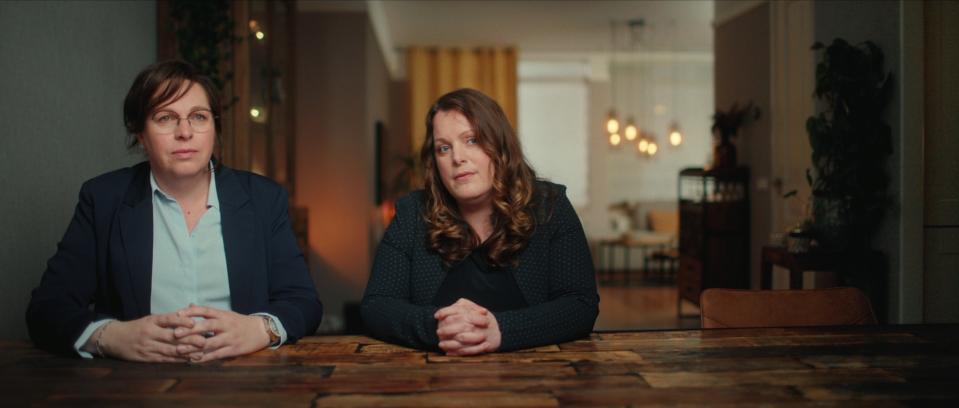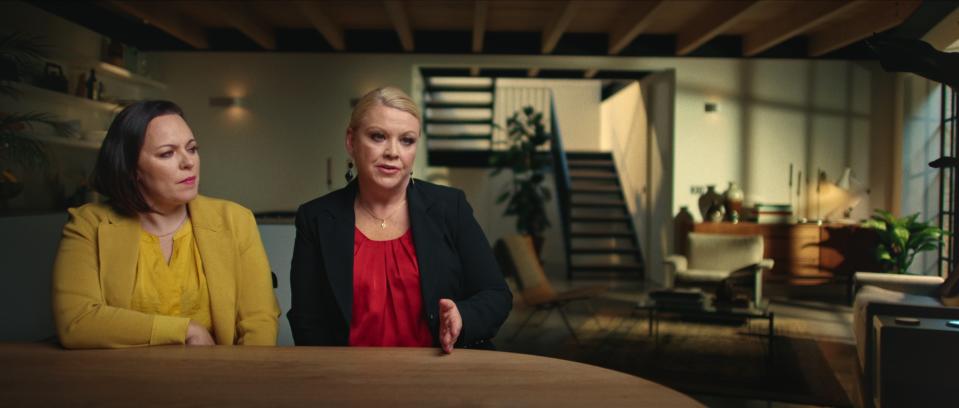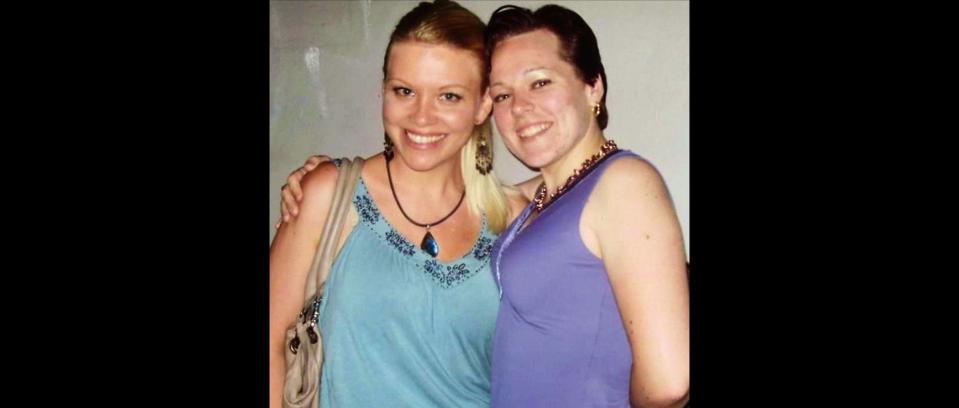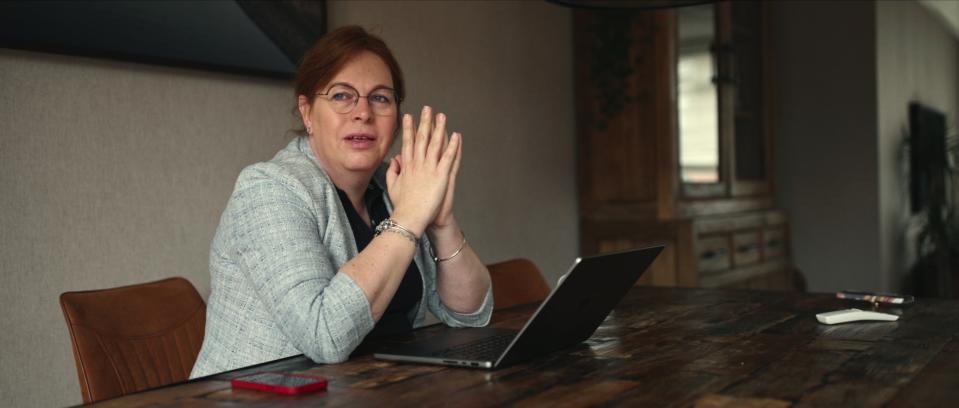The True Stories Behind Netflix's 'The Man With 1000 Kids'
Natalie was grocery shopping one Saturday morning when she got a call from her wife, Suzanne, asking her to return home right away. Suzanne had been basking in the March morning sun in their garden, leafing through the newspaper, when she came across an article about a serial sperm donor. He had been deceiving families across the Netherlands, where the couple lives—a country where regulations stipulate that donors can only provide samples to 12 families. The more times she saw his name, Jonathan Meijer, alongside a drawing of him, “I was like, sh-t, he really looks like Jonathan”—the man responsible for the women’s 11-year-old son, and who they had hoped would father their second child.
“The weird thing is that probably, in my subconscious, I didn't really want to understand it,” Suzanne reflects now, three years on. The article made plain that Meijer, who had told the couple that he planned to donate to five families in total, could be responsible for as many as 1,000 offspring in his home country of the Netherlands, the U.S., Australia, Mexico, Germany, Ukraine, and beyond.
When Natalie returned home, the women pored over the article; the news “released all the emotions that you can imagine, like disbelief, realization, anger, sadness, uncertainty,” they recall over a Zoom interview. “It was a very, very, very emotional day.”
They are sharing their story ahead of the release of The Man With 1,000 Kids—a new three-part Netflix documentary on Meijer’s sperm donation across the globe, which releases on July 3. Featuring interviews with other parents like them, as well as professionals out to stop Meijer from continuing to flout regulations, the film paints a chilling picture of a man operating outside the law and the many families impacted by his actions.
The dangers posed by serial donors

The Man With 1000 Kids, from London-based production company Curious Films, hits squarely in the true crime-cum-mystery sweet spot that has become catnip to streamers, sure to set a wave of internet sleuths abuzz once it airs.
Serial donors, such as Meijer, often see themselves as carrying out the ultimate altruistic act. But there are serious risks posed by so many children sharing the same genes. Likely the biggest is the potential for consanguinity, when blood relations have sexual contact. Siblings separated at birth may feel a certain pull toward one another, known as genetic sexual attraction, which—if they do not know they are related—can result in accidental incest. It has happened among donor siblings in the U.S., and poses a particularly high threat in the Netherlands, where Meijer has donated widely in a small geographical area (the country’s population is around 17 million, or just over half that of Texas). Three of his offspring ended up at the same daycare. “We know that in every small city and village there's a Jonathan child living close by,” Suzanne says.
Natalie had first met Meijer in the early 2010s when searching for a sperm donor with her then-girlfriend, opting for a private donation site in the hopes of gleaning more information about the men who might co-create her child. (Hospitals and clinics keep most information about donors anonymous.) Then 28, she clicked through numerous profiles before reaching Meijer’s, and “he checked all my boxes,” she says,.”He was artistic but he was also a teacher; he had a love for music, but also a love for helping people.”
Their initial meeting was “like going on the first date,” recalls Natalie, now 40; they walked around the Hague and grabbed a drink. His motivation was simple, he said: he wanted to help those who couldn’t otherwise conceive, and he would be involved in any child’s life as much as the mother wanted. To Natalie, Meijer—family-focused, and Viking-esque with flowing blond hair—was “really perfect.”
Read more: Why Parents Should Be Open With Their Kids About Donor Conception
There were a handful of unsuccessful attempts to inseminate before Natalie became pregnant with her son 12 years ago, met Suzanne, and settled into the family life she had longed for. In the months leading up to the article in de Telegraaf (which followed a New York Times report the month prior), Meijer had been at their house discussing donating for a second child, and she recalls feeling confident in their plans. “I was totally trusting him to be involved with us, and to be telling the truth,” Suzanne, 44, says. “And then that article showed totally the opposite.”
They reached out to one of the families named in the report, and were soon connected to many more parents unwittingly caught up in Meijer’s web. His distinctive looks would make for glaring similarities between the half-siblings; the women showed an image of their son to another parent, “And without a bat of the eye, she said, ‘Oh yeah, that’s one of Jonathan’s.’” The more children they found out about, the more “ridiculous” the snowballing figure became, says Suzanne. “Suddenly your kid is not one unique little being… [they’re] like a Billy bookcase.”
The women wanted answers: why hadn’t Meijer told them how many people he’d really donated to? And why was he so hellbent on creating a kingdom in his own image?
Families come to terms with their new reality

Meanwhile, more than 9,000 miles away in Australia, another couple, Laura and Kate (not their real names), were grappling with the same questions. After conceiving their two children via a private clinic, they had used the baby images provided of their donor to trawl social media, looking to find any half-siblings their children might have. The search proved mostly unsuccessful—until, finally, someone on Facebook recognized Meijer from the photos, and connected them with a group of parents of his offspring. Then, there were around 50 families in the group; the figure has been ticking upwards ever since.
“It’s been very overwhelming,” Laura, 38, says—not least because in Australia, rules state that donors can only help five to 10 families to conceive (depending on the state), and Meijer had long blown past that. “We never will know fully how many [half-siblings] are out there, and that's very unsettling.”
In the documentary, the couple is filmed flying to the Netherlands, where they meet some of the many families —a mixture of same-sex female couples, single mothers, and heterosexual pairs who encountered male fertility issues—with whom they are now linked for life. “Even though it was hugely rewarding and it felt like a bit of a relief in a way that our children were able to meet some of their siblings, there was still an overall overtone of just being at a loss, and not able to be within control of the situation,” she says. The sea of blond-haired children playing with her own 5- and almost 3-year-old share “so many similarities, and there's a real complex bond that you feel for other people's children when they're related to yours.”
The documentary suggests that between his clinical and private donations, Meijer could have fathered up to 3,000 children. It also puts him among a cohort of “super-donors” who are openly ignoring donation limits. On some occasions, these men—including Meijer—have allegedly mixed their semen together, unbeknownst to their recipients, before passing the sample along to hopeful families, to see whose would “win.”
Clinics and private sites rely almost exclusively on donor honesty. There is no real way to determine how many people someone has donated to, nor how many children that donation has produced, which makes regulation (and justice for those who don’t adhere to it) extremely challenging. Laura and Kate, horrified by how little their clinic had seemingly attempted to assess Meijer’s donation history, began searching online for those who had pursued legislative justice for fertility fraud. There, they found Eve Wiley, who has been fighting to change legislation across the U.S. after learning she had been a product of it herself.
Increasing protections for families seeking donors

Wiley had come across an email from a cryobank in her mother’s inbox while in her teens, which stated that her biological father was not the man she had grown up calling Dad but Donor 106 (whose real name is Steve). The pair met, and went on to form a close bond. Yet more than a decade later when her own son became sick, and she undertook genetic testing for clues, it transpired that neither of the men she had considered her father had ever been. Her biological father was in fact her mother’s fertility doctor, who had intentionally used his own sperm.
“In that moment, I knew that people lie,” Eve said in a recent interview. “DNA does not lie… Here I was at 30 years old, starting over for the third time in my life, just wondering who am I, and who is my biological father?”
She resolved to “find the purpose in the pain. And so if it wasn't a crime, I was going to make it one.” In 2019, she lobbied lawmakers in Texas, helping to make it only the third U.S. state to identify fertility fraud as a crime. Since then, a further 10 have made it illegal.
While Eve was glad to finally learn the truth about her genetic identity, it has come with a new set of challenges. “I have 14 half-siblings, and it's just so hard,” she says. “There are so many personalities.” It made her feel for the Australian women, whom she urged to go public with their story via the New York Times article, and she empathizes with the many whom Meijer has connected forever. “I felt dread for these moms, and [the children] aren't old enough yet to really understand the really deep and real complications that can come with having that number of half-siblings.” She is, she adds, “devastated for them.”
The women hope that the documentary will raise awareness of fertility fraud, and put pressure on global bodies to tighten regulation. But they acknowledge too that The Man With 1000 Kids may not serve as a warning to rogue donors, but rather give those fueled either by addiction, distorted altruism, or a God complex further motivation to keep spreading their seed.
Jody Madeira, co-director for the Center of Law at Indiana University Bloomington who worked with Eve to provide legal expertise in Texas and Florida, says that we are currently experiencing the “second wave” of fertility fraud. The first wave coincided with the advent of IVF itself, with key offenders including fertility doctors such as Kim McMorries, Wiley’s biological father, who used his sperm against mothers’ knowledge to create at least seven children; OB/GYN Donald Cline, who fathered 94 and is the subject of another Netflix documentary; and the Dutch fertility doctor Jan Karbaat, for whom the estimate is around 200.
While that may persist, the rise of at-home DNA testing kits does make that first wave riskier for medical workers (as people can find out their genetic history more easily). Madeira believes a second has flourished now that “individuals can access online videos and guides that tell them how to conduct home inseminations, can purchase products to safely and sanitarily collect sperm samples and conduct the inseminations, and can use apps or social media sites to connect,” she explains. Some may also use this close proximity to suggest intercourse with hopeful mothers in order to “increase” chances of success. (Multiple women in the documentary say they conceived children as a result of having sex with Meijer, who suggested he donate “the natural way.”)
Read more: How a DNA Testing Kit Revealed a Family Secret Hidden for 54 Years
Hope and uncertainty for the future

Last year, Meijer was taken to court in the Netherlands, banned from donating more semen to clinics, and told he could be fined $107,000 per infraction. (He declined to appear in the Netflix series, though he has posted several videos to his YouTube channel, which also includes videos on crypto and eating raw meat, criticizing the doc as “disgusting,” “deceptive,” and “sensational” and explaining his motivations for becoming a donor, which he sees as noble and altruistic.)
All of the women I spoke with shared fears that he was still donating. They remain frustrated, too, at the limited efforts to curb serial donors, suggesting that a global donor database could be a vital tool. Without that, they say that the health of their children, their children’s children, and many future lives created by these donors are at risk.
For now, the mothers are left to battle a dichotomy that will be with them for the rest of their lives; sheer joy that they have the offspring they craved, and horror that it happened this way, and that they may never know why. They are not angry, Suzanne says, but nor are they willing to let it go on. “The goal is to ultimately make sure that this will not happen again.”
Contact us at letters@time.com.


